We recently gathered industry executives to get the pulse on travel to Europe this year. Last week we looked at destinations in Europe that are primed for growth; this week, the discussion turns to the increasing desire among travelers for local experiences. The event was hosted by Leading Hotels of the World. In attendance were Ted Teng, president and CEO, The Leading Hotels of the World; Ruurd Hooijer, senior director, travel trade, North America, The Leading Hotels of the World; Navin Sawhney, CEO, Ponant; Daniel Durazo, director of communications, Allianz Global Assistance; Lori Corless, vice president, marketing, Central Holidays; Wibke Brown, director, product development, Delta Vacations; and Willie Montano, vice president, marketing, Insight Vacations. Representing Europe tourism offices were Michael Gigl, regional manager, Austrian Tourist Office; George Vella, head of sales North America, German National Tourist Office; and Alex Herrmann, director, North America, Switzerland Tourism.
Ruthanne Terrero: That’s certainly on trend, the desire to travel authentically and live like a local.
Lori Corless, Central Holidays: It’s true. It’s the chocolate making and the wine tasting, but it’s even more. We do a visit to a gondola yard, and visit with the gondoliers and gondola builders at work, and things like that.
Daniel Durazo, Allianz Global Assistance: We’re one of the largest travel insurance providers in the world. We’re a division of Allianz, which is a large German financial company and we provide travel insurance through all the leading travel agent consortia, through a lot of travel suppliers, including Delta and OTAs. We’re seeing 15 percent growth year over year in our business, and that’s on top of a very large base. We had 35 million customers last year.
And our business continues to grow. Ted mentioned anxiety; anxiety is bad for most businesses, it’s good for our business. The world has become a very uncertain place and that has helped grow our business tremendously over the last few years, whether it’s weather, terrorism, Zika, what have you. Fortunately, our products have answers to customer concerns over these, and what we think the value we bring to the travel industry and the travel agents is we think we take some of that anxiety out of the equation.
If something happens at your destination, or even at where you live before you leave you can frequently cancel your trip and get all your money back. Or you can interrupt your trip, you can get compensated for delays, those types of things that typically happen.
We think that our products make people worry a little bit less about the impact of those things on their trips. So we work very well hand in hand with travel agents and destinations and suppliers in that we give people the confidence to go places they might not otherwise go.
Which we think is great, because we do surveys every year and we see London and Paris being the top destinations for Americans very frequently. There are so many other great places to go in the world if you have travel insurance and travel assistance. You have this great app on your phone that we provide that will give you local resources wherever you are. We’re hoping that gives people the confidence to maybe go off-the-beaten path.
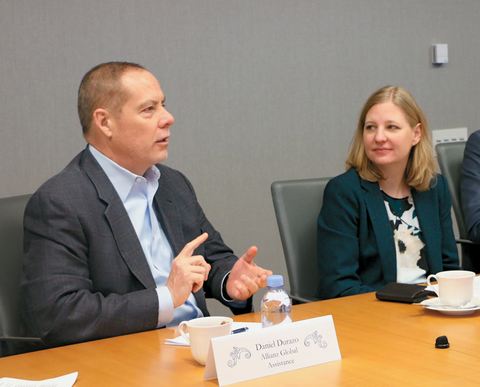
Ruthanne Terrero: Which is how the consumer has evolved. We’ve seen that if there’s a flight to a destination they seem to be willing to go, where many years ago maybe not so much. People seem to be more intrepid than ever.
Daniel Durazo, Allianz: Absolutely and we hope that continues, and then we can help to facilitate that.
Ruurd Hooijer, The Leading Hotels of the World: Dan, you just mentioned that you encourage travelers to go where they historically thought of not going. What we’re seeing in Europe, particularly over the past couple of years, is a trend toward travelers being willing, and interested in destinations that have maybe been a little bit off-the-beaten track.
So we’ve seen great growth in Ireland, Switzerland and Portugal, which historically were more classified as secondary travel destinations in Europe. And if you look at France, for example, we have a new hotel in Lyon called the Villa Maïa and Hotel Chais Monnet, which is the first luxury hotel in Cognac. These are destinations that really appeal to North American travelers who have experienced Paris. That’s really exciting for the travel agency community; they can actually educate the end consumer on new destinations in Europe.
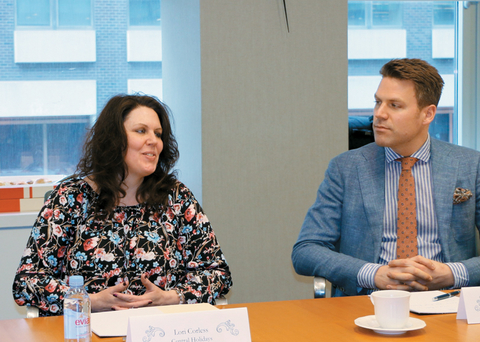
Ruthanne Terrero: Is anything surprising you about the consumer so far this year in terms of what they’re asking you for?
George Vella, German National Tourist Office: They are more interested in coming back to the country. In past years, we saw Germany combined with three, four, sometimes even five destinations; now we’re seeing combinations with two to three countries max. But as I said earlier, we are seeing more destination-Germany-only programs.
We’re also seeing a lot of interest in meeting with the locals — something that we are seeing and hearing from several tour operators as well. We have that opportunity in Germany, not only in dining with the locals, but also going to classes, like porcelain classes in Meissen or pottery classes in Berlin where they can meet with the locals.
Navin Sawhney, Ponant: On the cruise side, we’re seeing a blend of the single destination and other destinations. We’ve just launched a series of cruises called the Quintessential Collection, and the idea behind each of these is to allow you to become part of the destination through the experience. The Sicily program is food and wine, but the idea is not to bring in a celebrity chef, not to bring in a celebrated vintner to partner, it’s with locals, and we’ve seen a tremendous uptake.
In the British Isles, we’ve got one built around gardens and we were very pleasantly surprised with the amount of group promoters as well as several affinity organizations interested in gardening. It’s seeing Britain through a completely different set of optics.
It might be fair to say that experience is the currency of luxury now.
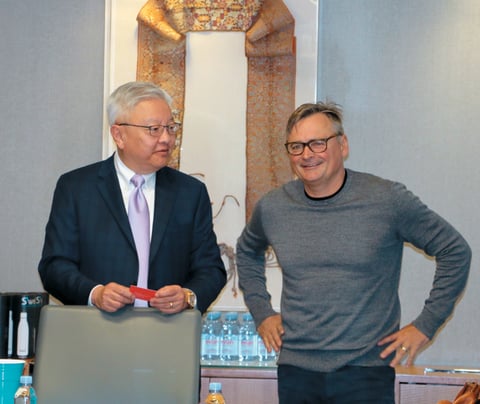
Michael Gigl, Austrian Tourist Office: I do feel that the wholly immersive local experience is the new normal; it’s not a trend anymore. That’s the way people want to travel and I feel that all these review websites and to some degree, Airbnb, contributes to that. Travel today is much more adventurous; if you have a couple of Yelp reviews of the place that aren’t terrible you feel pretty safe. So especially in Europe, in general, and I think in Austria specifically, it’s very easy to get around; it’s very easy to stumble into those local experiences. But I also see in organized travel there’s a lot of innovation happening now in groups and FIT programs; everybody is sort of demanding it now. I don’t think there’s ever going to be a way back to the insular travel experience. That is one of the big benefits of travel, opening up to other people and to other cultures. That’s driving it as well.
Ted Teng, The Leading Hotels of the World: I was asked recently, what’s new? It was sort of a casual question and in my answer was, “New is new.” What I’ve seen is that current customers want to go to new places.
I was talking to travel advisors and all they were asking me was, “Where do you have new members? I have customers who have been to the major cities and they’re asking me where else they can go in Italy.” And so travel advisors are trying to discover new destinations for their clients. Existing customers are looking to explore, as you say; they will go back to the same country, but they want to go deeper, they want to go to secondary, tertiary cities to really get the flavor of the culture of the country rather than just the larger city.
Then there are the new customers. If our current customers are going to new destinations, who’s going to fill the void for places that they usually go? What we’re finding is the emerging markets for us are the Middle East, Russia, Brazil and China; these now represent probably about 20 percent of our business.
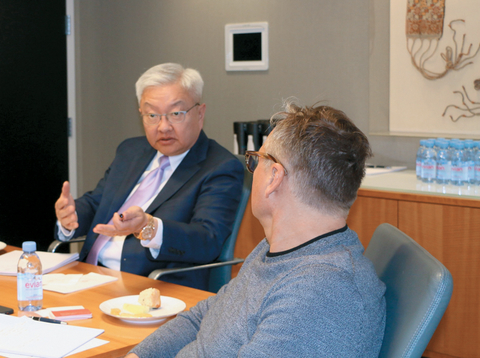
Ruthanne Terrero: I’m hearing that as well, because people are so anxious to tick destinations off their lists, travel advisors are being asked, “What’s new?” And travel advisors are recommending they go back to cities like New York and Paris because they always have new things going on.
Alex Herrmann, Switzerland Tourism: That’s something that we’re struggling with; we just took a deep dive into our numbers for last year. You asked about surprises, I mentioned already people are spending more money. People travel to Switzerland for the mountains. A surprise was that they actually travel to Switzerland for heritage and culture, which is very high up and we see more active travelers.
But one of the things that we really suffer with is that if you look at the top 10 list of where North American travelers go to in Switzerland, it’s very stable from year to year. So even with the growth last year, it’s still the same destinations on the top 10 list. In some of our neighboring countries, travelers now go to smaller cities. We have a hard time; people just want to go to Zurich, to Zermatt, to Lucerne, and somehow if you just look at the numbers, it’s very hard to get Americans, especially U.S. Americans to travel outside of these destinations. We struggle with getting people out to see other parts of the country.
Michael Gigl, Austrian Tourist Office: I agree with you Alex, it is stable. But on the other hand, there is a reason people go to Vienna or Salzburg. There’s always some sort of newcomer getting into the mix a little bit. But, yes, the top destination list is sort of stable. I don’t think Americans are any different; if I speak to my European friends and they tell me they come to the United States, they go to the same places. How many friends did I hear did the California, Las Vegas, Yosemite tour that I did 25 years ago.
I think what has changed is that people travel differently within those places. They’re doing things within a destination that they may have not done before like we talked about. Before they may have been on a double-decker sightseeing bus seeing the highlights and now they are venturing out to local farmers markets and districts that you know 10 years ago nobody would have gone to. But now they are out there strolling around and going to local cafes and things of that nature.
Navin Sawhney, Ponant: I would agree with you that people are traveling differently. Part of that is because the largest cohort is the Baby Boomer, and the Boomers had a bunch of Gen Xers and Gen Y people who traveled to Europe as children, and they discovered it very differently. There are two opposing trends within Europe for destinations which are concerning. One is Iceland. Five years ago, nobody would have said it’s a big destination, but the number of Americans in that tiny little country in the course of a very short season is quite overwhelming.
And the opposite is the absence of Istanbul, the very far end of Europe and a spectacular destination, and that’s a clear absence. We do need travel advisors to educate clients that much of Eastern Europe is not Turkey. The perception is that whole part of the world is a little bit more anxious than the rest of it. It deserves its day in the sun.
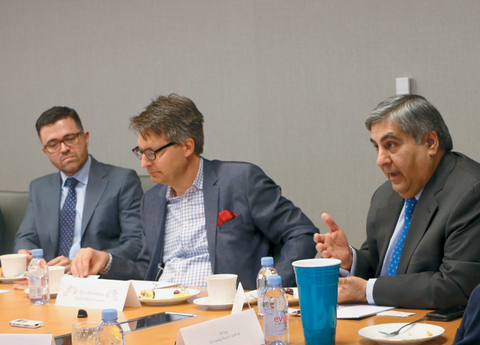
George Vella, German National Tourist Office: Like a number of European countries, I have to say, Germany is not a normal destination. It has several big cities that have their own visibility. It’s not like certain cities in Europe where you go to the capital of that city and stay put. In Germany, once Americans go to Berlin and Munich, they then look to experience different cities like Dresden for its architecture, or the music city of Leipzig. They venture to cities like Bamberg, which has become very, very popular, as over 2,000 of its buildings are protected by UNESCO. One of the things that we’re seeing is that Hamburg is getting a lot of publicity, particularly after a special opening of the Elbphilharmonie [Elbe Philharmonic Hall]. This is such a gem now. The city on its own is so diverse than all the other neighboring cities. Berlin is two hours away; in another hour-and-a-half you have Dresden, and you have Leipzig.
This is the difference between Germany and the other countries. Hamburg, Berlin, Dresden — they’re so diverse, and so close to each other. They’re completely different.
Wibke Brown, Delta Vacations: We’re definitely seeing a demand for more boutique hotels and unique properties in the neighborhoods, whereas earlier Americans wanted to stay in the big American chain hotels because they felt safe. But now it’s the opposite, and it might have something to do with the Millennials wanting to do something different. We’ve added a lot more boutique hotels, a lot of serviced apartments, where families can travel together and have some amenities. They can go shopping in the local market and prepare their own food. That’s a big trend.
Ted Teng, The Leading Hotels of the World: It’s not just independent hotels but it’s really local independent hotels.
Previously, for Americans, staying in a Marriott was a very safe choice, you know what you could count on. But now, going to stay in the Marriott in a European city will feel like that’s an imported product. It’s like us going to a mall and all the shops are exactly the same. When we travel we want to shop in stores that are not available in our home towns.
Navin Sawhney, Ponant: To add to Ted’s point, there’s definitely a trend toward local experiences. I do think that hoteliers generally sometimes take for granted what’s literally on their doorstep. I think there is an opportunity to articulate what the experience could be like and to have the confidence to actually recommend local authentic experiences that might not necessarily in their view be justified as being ultra luxury.
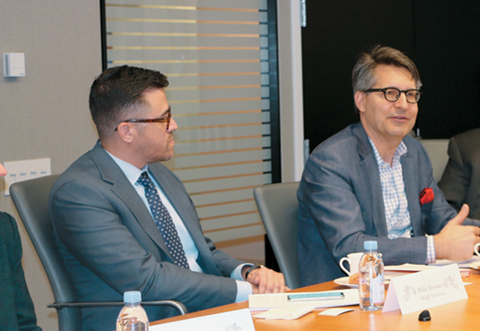
Willie Montano, Insight Vacations: We’re seeing in our company two types of luxury travelers for 2019. There are those who want to explore and go off-the-beaten path to new, up-and-coming destinations like Iceland and Portugal and then there is that segment of luxury travelers that wants to go to very famous destinations but wants to experience different things. They want to travel and stay in style, but they also want a taste of the local. We’ve partnered with a company that was called VizEat and is now called EatWith. It’s a very popular concept where you go to someone’s home and you enjoy an evening and have a wonderful meal. And everything is pre-booked and tested to make sure it’s going to be a safe and wonderful experience. So we have a great contrast of bringing our guests into a Michelin-star-rated restaurant in one evening, and then the next evening they’re going to be in a local home, experiencing what its like to be in that destination. We’re doing that in cities like Paris; cities that are more mature in tourism, where we’re bringing in new content.
Ruthanne Terrero: How do you find these people to provide these local experiences?
Lori Corless, Central Holidays: We have an office in Italy and we trust them completely to go out there and talk to people and to meet with the different sections in different regions of Italy and to find these experiences for us. That are a little bit off-the-beaten path, destinations that are a little more popular, but people don’t really know about the experiences that they can have there. I think it’s just being there and being familiar with it.

Ruthanne Terrero: It’s the good old-fashioned relationships and just getting to know people and trusting them.
Michael Gigl, Austrian Tourist Office: We are actively searching for them. We had one person on our staff, her title is Project Innovation Manager, for when a tour operator comes to us and looks for a certain type of experience. If we don’t know them we literally go out and try to find them.
We’re also taking a group of 60 travel advisors in October to what they call the Austrian Destination Summit. We do it every four years; it’s sort of like the Olympics. The program this year is so different from what we’ve done even a few years ago. There is one program, for example, called “Shopping with Lucy.” Lucy just so happens to be a great local in Vienna who knows the trendiest fun stores in the different neighborhoods. We’re making sure that the advisors have exposure to this sort of thing so that it’s not just insider knowledge per se. But it’s a lot of work sometimes, to find them; and different markets have different requirements and needs.
George Vella, German National Tourist Office: About nine years ago, I was approached by a tour operator specializing in FIT and he came up with the idea of dining with locals. It was quite a challenge for me to find at least one. I spoke with city tour offices and they said, “You are dreaming!” I mean we Germans do not open our doors for outsiders.
But it’s amazing how things change. One of the reasons he wanted to do this was not just to dine with the locals, but they wanted to hear the stories. They wanted to hear from the locals, how is the health system here, how is the education, how do you travel? Germans are known for traveling all over the world.
Opening up this kind of opportunity was quite a challenge, but on the other hand, that’s why we’re here. That’s the role of the tourist office. And when we get these kinds of requests we will do our best and try to entertain and meet the request.

Alex Herrmann, Switzerland Tourism: I think that’s how we’re all going to change on the national level. In Zurich, we now have five people who do nothing else than work with the different destinations and regions to get new products out there. Two years ago, we created this one-day ski experience, not so much for the U.S. market, it was more for the Asian market. They get everything they need to ski for a day. Then there’s a three-day program, for example, where if you’ve never been on skis we guarantee that after three days you can go down a certain hill and you get a certificate. This year, for the summer, we have several of these programs for biking, etc. We also have a program called “Taste my City” in several Swiss cities, where there are different locals that take people to all the different places.
I think we are so much more than just marketing organizations these days, we have to be on the pulse of these kinds of things, and actively promote and encourage this on all kinds of levels.
Related Stories
Europe Roundtable: Destinations Primed for Growth
London on a Budget: How to Save on Airfare, Lodging and More